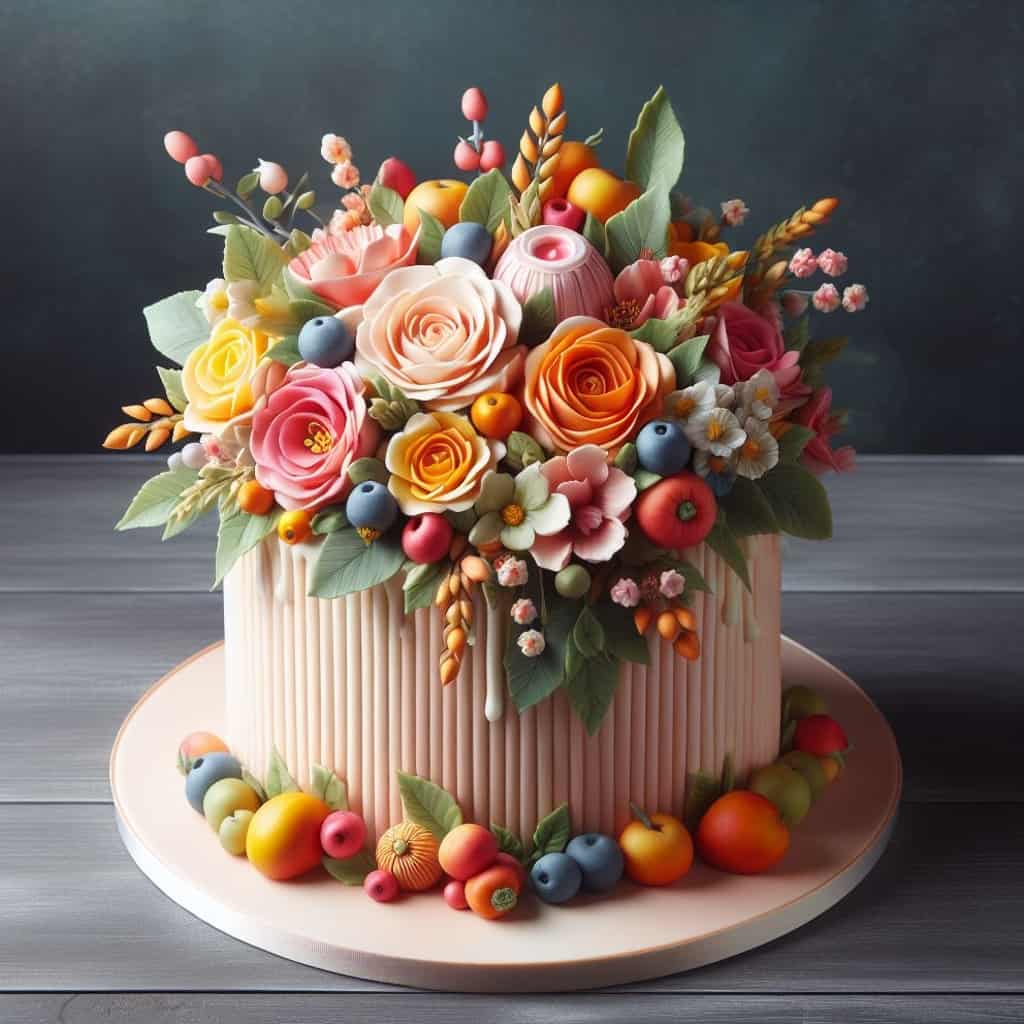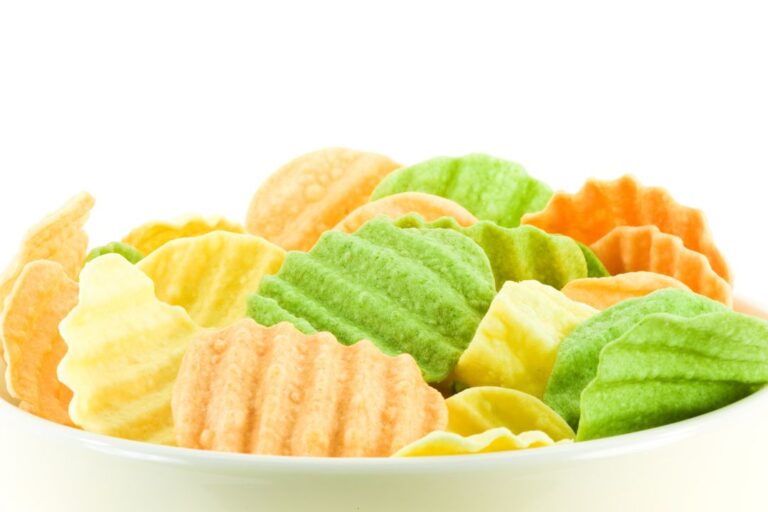Gluten-Free Fondant Recipe: Perfect Homemade Guide
Ditch the store-bought versions and dive straight into making your own delicious, gluten-free fondant recipe that promises health-conscious indulgence and creative cake decorating. Use a mixing bowl and plastic wrap to perfect the consistency with just a few drops of water if needed.
This isn’t your average confectionery cover-up; it’s a game-changer for those with dietary restrictions craving artistic expression in their baking. With simple words, we’ll whip up a batch of pliable, sweet goodness without the gluten tag-along, perfect for rolling out impressive designs that taste as good as they look.
Say goodbye to limited dessert menus and hello to inclusive treat crafting where flavor meets flexibility.
In just minutes, transform basic ingredients into a smooth canvas ready for your culinary artistry. Our approach shuns complicated jargon, ensuring you can try our recipe and achieve professional-looking, delicious tastes from the comfort of your kitchen—no specialty store required.
Key Takeaways
- Embrace the art of making gluten-free fondant by starting with simple, gluten-free ingredients to ensure your fondant is safe for those with gluten sensitivities.
- Follow the step-by-step instructions for making marshmallow fondant from scratch, which provides a pliable and tasty alternative to traditional fondant.
- Utilize the tips for working with fondant to achieve a smooth and professional finish on your cakes and confections.
- Enhance the appeal of your fondant by experimenting with natural flavorings and colors, allowing for creative and personalized cake decorating without artificial additives.
- Invest in the right equipment essentials to streamline the fondant-making process, ensuring consistent quality and ease of preparation.
- Consider the nutritional profile of homemade fondant as part of your overall dietary choices, particularly if you’re mindful of sugar intake or other dietary restrictions.

Understanding Gluten-Free Fondant
Gluten Sensitivity Concerns
People with gluten sensitivity need to avoid gluten. Traditional fondant often contains this protein. For people with celiac disease, eating gluten may cause harm to their bodies. Even a small amount can be dangerous. That’s why they must have a gluten-free diet.
A gluten-free fondant recipe ensures everyone can enjoy the cake without worry. This makes celebrations more inclusive. Imagine a birthday party where every guest, regardless of dietary restrictions, may dig into the same delicious cake made from an inclusive recipe covered in smooth, pliable fondant – that’s the joy of baking inclusively!
Fondant vs Buttercream
Fondant and buttercream are popular choices for decorating cakes, but they’re pretty different.
Fondant has a dough-like texture, while buttercream is creamy and spreadable. Some bakers prefer fondant because it creates a sleek look for elegant designs.
Choosing between these two recipes depends on appearance, taste preferences, whether you want your decoration to hold up well over time, and if you’re willing to try a new use.
Regarding shelf-life, fondant typically lasts longer than buttercream when stored properly because it dries out and hardens, preserving the design.
Here is a recipe for Gluten-Free Fondant that I found:
Easy Homemade Fondant – Faithfully Gluten-Free
Serves: 4-5 cups
Prep Time: 30 minutes
Cook time: Not applicable
Total Time: 12 hours 30 minutes
Resting time: 12 hours
Type of meal: Dessert
Country or region recipe originated from: Not specified
Type of diet: Gluten-free
Equipment needed:
- Heat-safe small bowl
- Small pot
- Stand mixer outfitted with a dough hook (or a good, heavy wooden spoon)
- Counter
- Plastic wrap
- Resealable plastic bag
Ingredients:
- 2 lbs (908 gr) of sifted confectioner’s sugar
- 1 packet of gelatin (1 tablespoon)
- 1/2 cup of white corn syrup
- 1/2 teaspoon flavoring (clear butter flavoring is what I used)
- 1 tablespoon glycerin
- 1/4 cup cold water

Instructions:
- Sift your confectioner’s sugar. If you don’t do this, your fondant will have little gravel-like lumps of tricky sugar bits.
- In a heat-safe small bowl, sprinkle the gelatin over the 1/4 cup of cool water to soften; let it set for 2 minutes.
- While getting all plump, put a small pot of about a half-inch of water to simmer.
- Place a small bowl over your simmering pot of water (double boiler style), and let the gelatin melt.
- Turn off the heat and add other liquid ingredients (corn syrup, flavoring, glycerin, and cold water). Stir until well blended.
- With half of your sifted confectioner’s sugar in the bowl of a stand mixer outfitted with a dough hook (or have a good, heavy wooden spoon in hand), pour the warm gelatin mixture into the sugar.
- Add the rest of the sugar, half a cup at a time. Keep stopping and scraping down the sides of the bowl.
- After a few minutes of mixing, you will notice that the mixture is quite stiff and slightly sticky but no longer wet.
- Sprinkle a fine dusting of confectioner’s sugar on the counter.
- Using some shortening, grease your hands.
- Place the fondant on the counter and start kneading the fondant by hand. Sprinkle with more confectioner’s sugar as needed.
- You want to create a nice ball of fondant that is not sticky but is still easy to form. It should be somewhat soft but not sticky.
- Double-wrap the fondant with plastic wrap and place it in a resealable plastic bag.
- Let it rest for 12 hours before using.
Notes:
- This recipe is gluten-free.
- The recipe originates from an unknown country or region.
- The recipe does not require any cooking.
- The recipe requires 12 hours of resting time.
Ingredients for Gluten-Free Fondant
Safe Flour Alternatives
When making gluten-free fondant, choosing a suitable flour is crucial. Almond flour and coconut flour are popular options. They offer a safe way to achieve the desired consistency without gluten. Almond flour brings a nutty flavor and firm texture to the recipe, while coconut flour provides a lighter taste with a softer finish thanks to its use.
Thanks to its use, Xanthan gum plays an essential role in gluten-free baking recipes. It acts as a binder, replacing the elasticity that gluten usually provides in doughs and batters. A small amount can help your fondant hold together better.
Comparing different flours is essential, too. Each recipe has unique properties that affect your fondant’s taste and texture, thanks to specific ingredients. Experiment to find which suits your palate best.
Vegan Marshmallows
Vegan marshmallows, thanks to new recipes, are now readily available for those avoiding animal products like gelatin and using alternative ingredients. These marshmallows can be melted down like traditional ones to create fondant but may alter their texture slightly—often resulting in a softer product.
The difference in taste between regular and vegan marshmallow-based fondant recipes is subtle yet noticeable for some palates; it’s worth trying both to see which you prefer.
High-Quality Sugars
Choosing high-quality sugars, such as organic or raw sugar, and their proper use can make all the difference in the outcome of your fondant recipe. Not only do these sugars contribute to sweetness, but they also impact the overall consistency of your finished product.
Powdered sugar is critical for achieving smoothness in fondant; it dissolves quickly and helps prevent graininess. Understanding how each type of sugar affects sweetness levels will guide you toward creating perfectly balanced flavors within your gluten-free recipe, ensuring proper use of ingredients.
Making Marshmallow Fondant from Scratch
Melting Methods
Marshmallows are essential in our gluten-free fondant recipe—the proper melting method matters. You can use a double boiler or a microwave. Both work, but they’re different.
The double boiler heats marshmallows gently. It’s good for avoiding burns. You need to stir often and watch closely.
A microwave is faster but riskier—heat in short bursts, stirring between each one to prevent overheating, as the recipe instructs. Use caution to avoid scalding.
Remember, even melting makes the best base for your fondant recipe; use it accordingly.
Mixing and Kneading
Now, let’s use the recipe to mix ingredients smoothly into the melted marshmallows without overworking them.
Start by adding powdered sugar slowly while mixing steadily. This helps you avoid lumps in your fondant dough.
Kneading comes next, and it’s crucial for elasticity. Do this when the mixture is warm, not hot or cold, as the recipe instructs.
You want to knead until it’s smooth and stretchy, but don’t go too far—over-kneading will make it tough.
As the recipe instructs, keep air bubbles out by pressing firmly as you fold the dough during kneading.
With these steps from the recipe followed carefully, you’ll have the perfect gluten-free fondant ready to shape and decorate cakes or sweets!
Instructions for Homemade Fondant
Step-by-Step Guide
Making gluten-free fondant requires precision. Begin by gathering all your ingredients. Use a scale to measure them accurately to ensure consistency in your fondant recipe.
- Sift the gluten-free powdered sugar into a large bowl.
- In a separate bowl, mix water with gelatin until it’s fully absorbed.
- Heat the mixture gently until the gelatin dissolves completely.
Look for a clear liquid without granules to know you’re on track with the recipe.
Next, add glucose syrup and glycerin to your gelatin mixture as the recipe instructs. Stir well until they blend, forming a thick, smooth paste.
Check that it’s glossy, free of lumps, and ready for use in the recipe before moving on.
Tips for Working with Fondant
Achieving Ideal Consistency
Making gluten-free fondant requires balance. Too much liquid and it’s sticky; too little, and it crumbles. Start by balancing wet and dry ingredients carefully. If your fondant feels tough or tears easily, it might be too dry; you may need to adjust or use the recipe. Add a tiny bit of water to soften it.
Before covering cakes with fondant, do a pliability test. Roll out a piece of the recipe and drape it over a small object like a rolling pin or cup to see if it drapes well without tearing during use.
If you encounter consistency problems with your fondant recipe, don’t panic; use the right techniques! Here are quick fixes:
- For crumbly fondant, knead in more liquid gradually until the desired texture is achieved.
- For sticky fondant, incorporate more powdered sugar or cornstarch until it is no longer tacky.
Remember that practice with the right recipe makes perfect when finding the feel for your gluten-free fondant.
Preventing Stickiness
Stickiness can ruin even the best gluten-free fondant recipe. To prevent this frustration:
- Dust surfaces with either cornstarch or powdered sugar before rolling out your fondant.
- Use just enough to create a non-stick surface without drying out the dough.
Proper storage is vital for maintaining optimal moisture levels in finished gluten-free fondant:
- Wrap tightly in plastic wrap.
- Store inside an air-tight container.
- Keep at room temperature away from direct sunlight and heat sources.
Signs that your fondant is too moist include stickiness on hands and surfaces during handling as well as sagging when placed on cakes. Correct this by:
- Kneading in small amounts of powdered sugar until less sticky.
- Letting sit uncovered for short periods, allowing surface moisture to evaporate slightly before use.
Flavoring Your Fondant
Natural Extracts
Natural extracts can transform your gluten free fondant from plain to delightful. Vanilla, almond, or lemon extracts are popular choices. They add a rich aroma without artificial additives.
For example, vanilla extract gives a classic sweetness that complements most cakes. Use it sparingly though! A little goes a long way. Aim for about one teaspoon per pound of fondant for just the right touch.
Almond extract offers a nutty depth. It’s stronger than vanilla, so start with half a teaspoon per pound of fondant and adjust to taste.
Lemon extract brings zesty brightness perfect for summer treats. Again, moderation is key—less than half a teaspoon per pound should do the trick.
Remember these ratios to ensure the flavor enhances rather than overwhelms your creation.
- Vanilla: 1 tsp/pound
- Almond: ½ tsp/pound
- Lemon: <½ tsp/pound
Spice Infusions
Spices like cinnamon or nutmeg can give your fondant an unexpected twist. These spices create warmth and complexity in every bite.
To infuse spice evenly, mix ground spices into the sugar before adding any wet ingredients. This way they’ll be distributed throughout your fondant without clumps or uneven patches.
Imagine pairing cinnamon-infused fondant with an apple cake – divine! Or nutmeg with carrot cake; it’s traditional yet tantalizing.
Experiment with quantities but remember – less is more when starting out:
- Cinnamon: Start with ¼ tsp/pound
- Nutmeg: Begin with ⅛ tsp/pound
Balance is crucial here as well; too much spice might overpower other flavors in your dessert.
Coloring Fondant Naturally
Organic Dyes
After infusing your fondant with delightful flavors, it’s time to add a splash of color. Organic dyes offer a safe and natural way to do so. Beet juice can turn your gluten-free fondant into lovely shades of pink or red. Spirulina works well for green hues, while turmeric gives a vibrant yellow tone.
These natural colorants let you achieve vivid colors without the need for chemicals. However, remember that organic dyes might not be as stable as artificial ones. They can fade over time, especially when exposed to light.
Color Mixing Techniques
Creating the perfect shade requires knowing how to mix colors effectively. Start by blending primary colors—red, blue, and yellow—to create custom hues for your gluten free fondant recipe.
Understanding basic color theory is crucial here. It helps avoid muddy or unintended shades in your fondant creations. To get consistent coloring throughout your batch, add dye gradually and knead thoroughly after each addition.
Decorating with Marshmallow Fondant
Cake Covering Basics
Rolling out fondant to the right size is key. It must cover your cake without tearing. Start by kneading your gluten-free fondant until it’s pliable. Use a rolling pin and work from the center outwards, aiming for an even thickness.
Then comes draping it over the cake layers. Carefully lift the rolled-out fondant using your arms or a rolling pin. Gently lay it on top of the cake, centering as best you can.
Smoothing out wrinkles and air pockets is next. Use your hands or a fondant smoother to press down gently from the top then outward to edges. This step gives cakes that sleek look we all love.
Finally, trim excess fondant for clean edges around your masterpiece’s base.
- Measure before cutting,
- Keep tools sharp,
- Work slowly for precision.
Sculpting and Molding
Shaping gluten-free fondant into figures requires patience and practice. To start sculpting, mold small amounts of fondant into basic shapes like spheres or cubes – these are often called fondants balls which serve as building blocks for more complex designs.
For drying sculpted pieces, place them in a cool room away from direct sunlight.
- Let them sit undisturbed,
- Check progress periodically,
- Avoid touching too much to prevent fingerprints or dents.
When combining different consistencies of marshmallow fondant:
- Mix thoroughly before shaping.
- Test firmness; adjust if needed.
- Assemble parts carefully; use water or edible glue sparingly as adhesive.
Equipment Essentials for Fondant Making
Must-Have Tools
Rolling pins, smoothers, and cutters are key. They make shaping fondant easier. Rolling pins should be non-stick. This stops dough from clinging to them. Smoothers help create a flat, even surface on your fondant.
Cutters need sharp blades. Sharp blades cut cleanly through gluten-free fondant. They prevent the dough from dragging or tearing during cutting.
A good silicone mat is crucial too. It makes rolling out sticky gluten-free dough simpler without adding too much flour or starch, which can dry out your fondant.
- Essential tools include:
- Non-stick rolling pins
- Fondant smoothers
- Precision cutters with sharp edges
- High-quality silicone mats
Select these items carefully for best results.
Optional Gadgets
Turntables can elevate your decorating game significantly when working with gluten-free fondants. They allow you to spin your cake as you work, giving you access to all angles easily.
Embossers and extruders offer advantages as well. Embossers imprint designs onto the surface of the fondant, while extruders help create long strings or shapes perfect for detailed decorations.
Airbrush kits might seem like a luxury but they’re worth it for intricate work on gluten-free options where traditional frosting techniques may not be suitable due to dietary restrictions.
Silicone molds save time creating complex patterns and textures that would otherwise require painstaking handwork.
- When optional gadgets become useful:
- Turntables for easy cake rotation
- Embossers for pattern imprinting
- Extruders for precise shapes
- Airbrush kits when precision coloring is needed
Consider investing in these tools if you often decorate cakes with gluten-free options.
Nutritional Profile of Homemade Fondant
Caloric Content
Gluten-free fondant offers a sweet finish to cakes without gluten. Traditional fondant and its gluten-free counterpart differ in calories. A serving of traditional fondant typically contains more calories due to wheat-based glucose syrup. Gluten-free versions often use corn or rice syrup, which can lower the calorie count slightly.
Sweeteners impact caloric content too. Options like stevia or monk fruit may reduce total calories. These alternatives work well in gluten-free recipes and add sweetness without extra calories.
Additional ingredients affect calorie totals as well. Gums, like xanthan or guar gum, have few calories but are essential for texture in gluten-free baking. Alternative flours also play a role; almond flour has higher calories than wheat flour but is naturally gluten-free.
Allergen Information
Kitchens must be vigilant about cross-contamination to ensure safety for those with allergies. Even a small amount of gluten can trigger reactions in sensitive individuals.
Here are some tips for avoiding allergens:
- Use separate equipment from that used with regular flour.
- Clean surfaces thoroughly before making your fondant.
- Store ingredients separately to prevent accidental mixing.
Reading labels is critical when buying pre-made ingredients for your recipe:
- Look for certifications indicating the product is free from common allergens.
- Check every ingredient list; hidden sources of gluten often lurk under names like ‘maltodextrin’ or ‘dextrin’.
When sharing your homemade confections, it’s crucial to inform others about potential allergens:
- Clearly label any goods containing allergens.
- If selling products, include an ingredient list on the packaging.
- Be prepared to answer questions regarding preparation methods and contents.
Summary Gluten-Free Fondant Recipe
Crafting gluten-free fondant is a piece of cake with the right ingredients and techniques. You’ve learned to mix up your marshmallow fondant from scratch, tailor its flavor and color to perfection, and decorate like a pro.
Using these tips, your fondant will look stunning and align with dietary needs without compromising taste or texture. The nutritional profile of your homemade fondant gives you full control over what goes into your sweet creations, ensuring they’re as wholesome as they are delightful.
Ready to roll? Your kitchen awaits your artistry. Experiment with the hues and essences that tickle your fancy, and let your imagination run wild. Share your masterpieces with us using #GlutenFreeFondantMagic. We can’t wait to see the wonders you whip up!
Frequently Asked Questions
What ingredients do I need for gluten-free fondant?
You’ll need marshmallows, powdered sugar, water, and vegetable shortening. Ensure your marshmallows are gluten-free!
How do I make gluten-free fondant from scratch?
Melt the marshmallows with water until smooth. Gradually mix in powdered sugar until it forms a dough-like consistency.
Can I flavor my gluten-free fondant?
Absolutely! Add extracts like vanilla or almond to taste when mixing your fondant.
Is it possible to color homemade fondant naturally?
You can use natural food dyes or juices from fruits and vegetables for coloring.
What tips can you give for working with homemade fondant?
Keep your hands and surface well-greased with shortening to prevent sticking. Roll out the fondant evenly for best results.
What equipment is essential for making homemade fondant?
A sturdy rolling pin, silicone mat, and precise measuring tools will make your life easier when working with fondant.
Does homemade marshmallow fondant have a different nutritional profile than store-bought?
Homemade versions often have fewer additives, but check individual ingredient labels as they vary widely in nutritional content.
Nutritional information for Gluten-Free Fondant Recipes
- Gluten Free Alchemist provides a recipe for gluten-free fondant fancies with pistachio, orange, and raspberry. The recipe includes a gluten-free flour blend, ground pistachios, and other ingredients. The post also includes nutritional information for the recipe.
- Go Healthy With Bea provides a gluten-free and vegan chocolate fondant cake recipe. The post includes nutritional information for the recipe.
- Oh My Veggies provides a recipe for gluten-free and dairy-free chocolate fondant cakes with salted caramel filling. The post includes nutritional information for the recipe.

Born and raised in a family of foodies, Georgia’s passion for cuisine was nurtured from a young age as she learned the intricacies of flavor and texture from her grandmother’s kitchen. As an adult, this early fascination blossomed into a full-fledged love affair with the culinary world.







